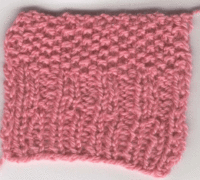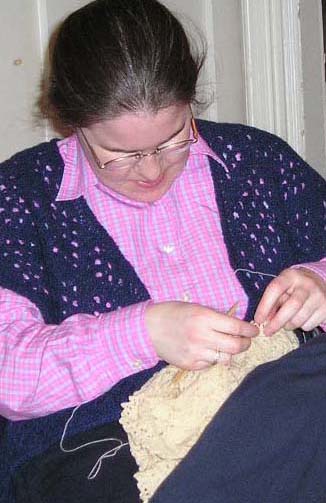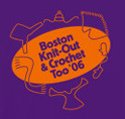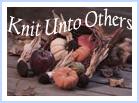
Wednesday, October 19, 2005
Newbies -- Reading Your Knitting I
Every so often I teach a class in Reading Your Knitting, and Lucy thought it would be a good idea if I posted the handout as a series of blog posts. I'm not always posting from the same computer, so it probably won't be sequential, but I'll get it up over the next few weeks.
I’ll start by recommending a few books for how to look at your knitting. Knitting in Plain English by Maggie Righetti is an excellent textbook for learning how to read your knitting and make “bookmarks” to find your place when you put it down. Stitch ‘n Bitch by Debbie Stoller is a comprehensive text covering a lot of basic information. Knitting Without Tears by Elizabeth Zimmerman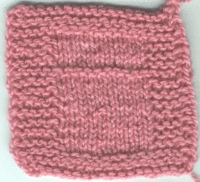 n is the best book of knitting philosophy, with practical advice, that I know.
n is the best book of knitting philosophy, with practical advice, that I know.
Let’s start by looking at some knitted samples. It has been said that there is one stitch in knitting, with two sides to it. A purl stitch is the reverse side of a knit stitch. The stitch looks like a V in the front, and a bump in the back.
Recognizing stockinette/reverse stockinette: Can you find the row that’s different? What is the stitch that surrounds the sample? How is it formed?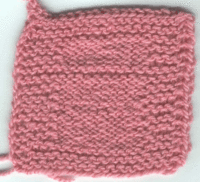
Ribs are formed by vertical lines of stockinette and reverse stockinette placed next to each other. The bottom section is K1P1, the middle section is K2P2, and the top section is single knits and purls alternating on top of each other. Sometimes this is known as seed stitch, other times moss stitch. There's no hard and fast rule which is seed and which is moss, sort of like which is a water fountain and which is a bubbler. If someone asked you where to find one, you'd point to the thing coming out of the wall that squirts water so a person could theoretically drink out of it.
Try looking at your project to determine whether you are knitting or purling, then compare it to the written instructions. This will help develop your sense of what the project should look like in different situations.
Next time, how to examine a pattern row by row, to know what it should look like when it's knitted up.
